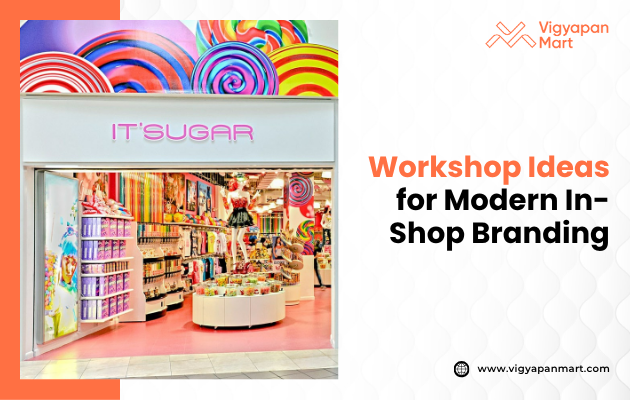How Experiential Retail Enhances Customer Engagement?

In today's digital-first world, brick-and-mortar stores face the challenge of competing with the convenience of online shopping. Yet, experiential retail has emerged as a transformative strategy to bridge this gap, offering customers immersive and memorable experiences that go beyond traditional shopping. This blog explores how experiential retail enhances customer engagement, builds brand loyalty, and drives sales.
What is Experiential Retail?
Experiential retail refers to creating unique, interactive shopping experiences that engage customers' senses and emotions. Unlike traditional retail, which focuses on transactions, experiential retail emphasizes connection and immersion. It transforms stores into destinations where customers can interact with products, participate in activities, and enjoy personalized services.
Key Features of Experiential Retail
- Immersive Experiences: Use of virtual reality (VR), augmented reality (AR), or interactive displays.
- In-Store Events: Hosting workshops, live music performances, or art exhibitions.
- Hands-On Product Trials: Allowing customers to test products before purchasing.
- Community Spaces: Creating environments where customers feel part of a community.
Why Experiential Retail Matters?
Modern consumers prioritize experiences over products. According to Shopify, 81% of shoppers globally are willing to pay more for enhanced shopping experiences. This shift highlights the importance of experiential retail in meeting evolving expectations.
Benefits of Experiential Retail
- Stronger Emotional Connections: Memorable experiences foster deeper relationships with brands.
- Increased Foot Traffic: Unique store designs and events attract more visitors.
- Higher Conversion Rates: Engaged customers are more likely to make purchases.
- Brand Differentiation: Distinctive experiences set brands apart from competitors.
Examples of Successful Experiential Retail:
Several brands have successfully implemented experiential retail strategies to enhance customer engagement:
How Experiential Retail Enhances Customer Engagement?
Experiential retail drives engagement by creating environments where customers actively participate rather than passively shop. Here’s how it works:
1. Immersive Technology Integration
- VR/AR allows customers to visualize products in real-life scenarios (e.g., trying furniture in virtual rooms).
- Interactive displays make shopping more engaging and informative.
2. Personalization
- Tailored experiences, such as personalized styling sessions or curated product recommendations, make customers feel valued.
3. Community Building
- Hosting events like yoga classes or art workshops fosters a sense of belonging among customers.
4. Emotional Resonance
- Experiences tied to brand values (e.g., TOMS VR campaign) create lasting impressions that build loyalty.
Traditional Retail vs. Experiential Retail:
Let’s compare the two approaches:
Experiential retail transforms shopping from a chore into an enjoyable activity, encouraging repeat visits and long-term loyalty.
Steps to Implement Experiential Retail
Retailers looking to embrace experiential strategies can start with these steps:
- Understand Your Audience: Identify what resonates with your target demographic (e.g., Millennials value unique experiences).
- Leverage Technology: Incorporate VR/AR or interactive displays for immersive experiences.
- Host Events: Create opportunities for customers to engage with your brand through workshops or live performances.
- Design Engaging Spaces: Build visually appealing environments that reflect your brand identity.
Conclusion
Experiential retail is not just a trend; it’s the future of physical shopping spaces. By offering immersive, personalized, and memorable experiences, retailers can enhance customer engagement while driving sales and fostering loyalty. As consumer expectations evolve, embracing experiential strategies will be key to staying competitive in the retail industry.
Are you looking for an experiential marketing agency to launch your next ad campaign? Connect with Vigyapan Mart today.









